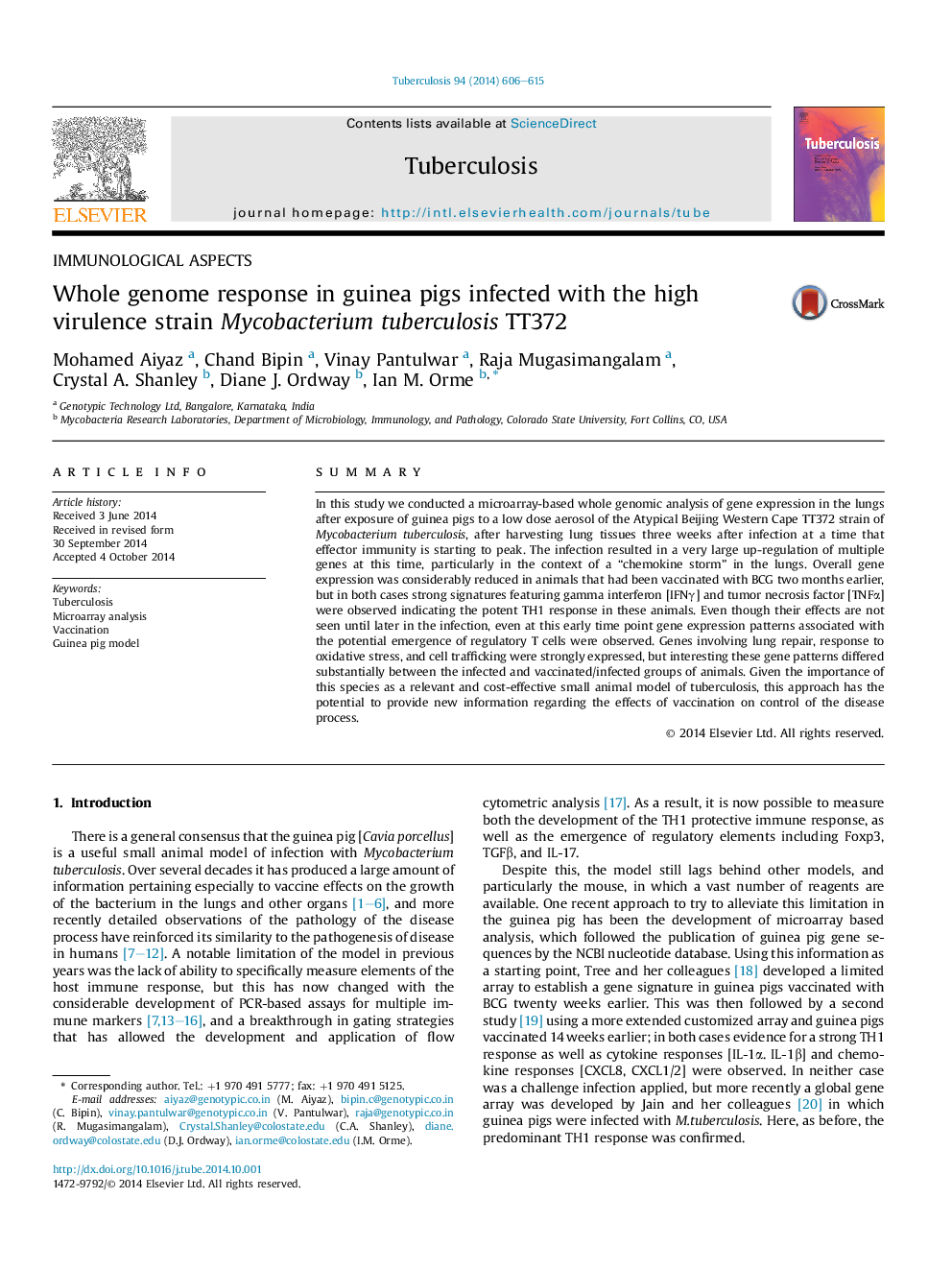| Article ID | Journal | Published Year | Pages | File Type |
|---|---|---|---|---|
| 10962063 | Tuberculosis | 2014 | 10 Pages |
Abstract
In this study we conducted a microarray-based whole genomic analysis of gene expression in the lungs after exposure of guinea pigs to a low dose aerosol of the Atypical Beijing Western Cape TT372 strain of Mycobacterium tuberculosis, after harvesting lung tissues three weeks after infection at a time that effector immunity is starting to peak. The infection resulted in a very large up-regulation of multiple genes at this time, particularly in the context of a “chemokine storm” in the lungs. Overall gene expression was considerably reduced in animals that had been vaccinated with BCG two months earlier, but in both cases strong signatures featuring gamma interferon [IFNγ] and tumor necrosis factor [TNFα] were observed indicating the potent TH1 response in these animals. Even though their effects are not seen until later in the infection, even at this early time point gene expression patterns associated with the potential emergence of regulatory T cells were observed. Genes involving lung repair, response to oxidative stress, and cell trafficking were strongly expressed, but interesting these gene patterns differed substantially between the infected and vaccinated/infected groups of animals. Given the importance of this species as a relevant and cost-effective small animal model of tuberculosis, this approach has the potential to provide new information regarding the effects of vaccination on control of the disease process.
Related Topics
Life Sciences
Immunology and Microbiology
Applied Microbiology and Biotechnology
Authors
Mohamed Aiyaz, Chand Bipin, Vinay Pantulwar, Raja Mugasimangalam, Crystal A. Shanley, Diane J. Ordway, Ian M. Orme,
